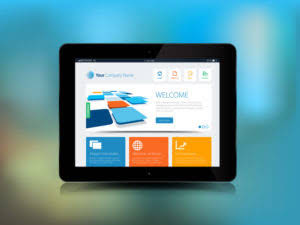4 simple but effective cash flow management strategies for nonprofits
4 simple but effective cash flow management strategies for nonprofits

It also helps build and maintain cash reserves, which provide the necessary financial cushion to continue operations during lean periods or unforeseen circumstances. Cash flow management is critical for https://www.bookstime.com/ the sustainability and success of nonprofit organizations. While these entities operate with a mission-driven focus, they must also navigate financial challenges effectively to fulfill their objectives.
- According to the 2018 State of the Nonprofit Sector Survey report, fewer than 25% of nonprofit organizations had saved a six-month cash reserve, and most did not have even three months of expenses saved [3].
- Nonprofit organizations face unique challenges when it comes to managing cash flow.
- In many cases, even the latter can make a tremendous difference to an organization’s cash flow.
- When a donor pledges an annual gift to your organization, ask them whether they’d be willing to drop a zero and give that amount monthly.
- Diversifying revenue streams can help stabilize cash flow and reduce the risk of cash flow shortages.
Close unneeded cash accounts.
In other words, cash flow not only shows you how much money you have in your nonprofit but also the timing of when money is coming in and when it’s flowing out of the organization. Maintaining multiple cash accounts requires time and effort and can increase the likelihood of errors. If a separate bank account for restricted funds is not required, we normally do not recommend opening one.
Video: How to Use the Cash Flow Projection Tool
- Overnight, these funds generate interest, and before the beginning of the next business day, they’re returned to the operating account.
- Furthermore, cash flow reviews identify potential problems and enable them to take corrective action.
- But this isn’t to say that nonprofit leaders are purely at the mercy of the business model; understanding the way the model impacts cash flow is the first step toward planning for and managing it.
- The problem with this advice, however, is that cash flow in a nonprofit is not the same as cash flow in a for-profit.
- In order to do that effectively, however, you first need to understand where the money is coming from.
- With so much focus on the organization’s mission, cash flow statements and balance sheets can fall by the wayside, often overlooked as a bothersome chore rather than an integral key to success.
If your nonprofit also struggles to maintain a cash reserve, now is the time to start addressing that issue. Having little to no cash reserve leaves you extremely vulnerable to failure as a result of cash flow shortages and unforeseen expenses. A reserve fund is essentially a savings account that the nonprofit can draw from in times of need. This can help the nonprofit cover unexpected expenses or take advantage of opportunities that arise. Additionally, having a reserve fund can help the nonprofit weather economic downturns. If donations decline during a recession, the nonprofit will still have access to funds that can be used to pay employees and keep the organization running.
Firm of the Future
Cash management is of vital importance for all organizations, but it’s especially important in the nonprofit sector. To ensure they can continue to fulfill their mission, nonprofits must embrace comprehensive cash management policies. Effectively managing your cash flow, compliance, regulations, and reporting requirements can be overwhelming, especially without a team specializing in each of these areas. Having a second set of eyes on financials is a prudent practice for nonprofit organizations. It involves engaging an external expert, such as a professional bookkeeper or accountant, to review and analyze financial records. With access to unlimited cloud storage, your financial policies and procedures and all your other documents will always be within easy reach of your board members.

When your bookkeeping is accurate and current, you can easily create a cash flow projection to anticipate future expenses and income – and ensure you’ll have sufficient cash to fund your programs and operations. To avoid this, nonprofit organizations must proactively manage their cash inflows and outflows and take steps to reduce the risk of a shortage. This resource will help your nonprofit manage your cash flow by explaining why, when, and how. Additionally, this resource provides management strategies to help your nonprofit prevent cash flow shortages. Based on your current cash flow, previous financial performance, and expected income, create detailed budgets for your organization’s spending.

Additional Tools and Resources
Nonprofits rely on donations and grants to fund their operations, which can make it difficult to predict and manage their cash flow. Many of these pointers deserve a separate post (or two or three) which we will endeavor to cover in the future. Some boards like to designate cash for certain purposes, such as a reserve fund or to be used for certain programs. • Optimize treasury management through efficient cash handling, investment strategies and technology solutions to improve financial efficiency and support organizational objectives.

Realizing that other organizations could benefit from this app, they licensed it out, charging others a nominal fee to use it. The income generated from this app is reinvested into maintaining the technology behind it, meaning Denver Food Rescue now has a useful tool at their disposal that is practically self-sustaining. On a nonprofit cash flow statement similar note, don’t be afraid to switch vendors if it means getting a better deal. When looking at your financial statements, you should be able to identify areas to reduce costs. If you’re currently leasing a building, for example, consider whether it might make more long-term financial sense to buy a new premises outright.

